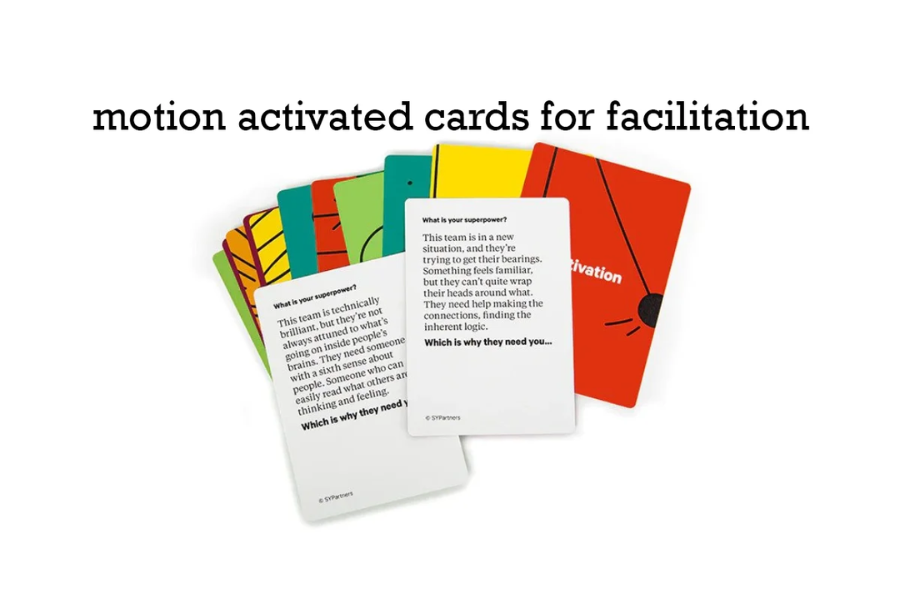In today’s rapidly evolving world, technological advancements are continuously reshaping traditional ways of doing things. Organizations across various sectors are striving to improve communication and collaboration, which in turn boosts their productivity and builds trust. Among these innovations, motion-activated cards are a cutting-edge technology that marries the physical appeal of traditional cards with the dynamic power of digital capabilities. These cards have emerged as a revolutionary tool in facilitating communication and engagement.
In this article, we will dive into the concept of motion-activated cards, exploring their benefits, drawbacks, and various applications.
Dynamic Facilitation: A Modern Problem-Solving Tool
Dynamic facilitation is a powerful method designed to help groups tackle complex issues, enabling them to make swift, creative, and effective decisions. Unlike traditional decision-making methods that rely on structured processes and predefined agendas, dynamic facilitation encourages individuals to think freely, explore different perspectives, and come up with novel solutions. This technique has gained popularity in both professional and personal decision-making, allowing participants to feel more empowered and confident in their choices.
What Are Motion Activated Cards?
Motion-activated cards are an innovative form of digital technology designed to promote interaction and facilitate communication. These cards are equipped with electronic components, such as sensors and LEDs, that trigger specific actions when motion is detected. Whether it’s displaying a message, triggering feedback, or performing a task, these cards create an engaging and interactive experience.
Key Components of Motion Activated Cards
Several key components are used to enable motion-activated cards to perform efficiently:
- Motion Sensors: These sensors are the core component of the cards, detecting specific movements that activate the card’s functions. Common types include:
- Gyroscope: Tracks the rotational movement of the card.
- Accelerometer: Detects the direction and velocity of the card, including shakes and tilts.
- Microprocessor/Motherboard: Acts as the card’s control center, gathering data from the sensors and triggering the appropriate actions.
- LED/Display: Visual feedback is often provided via small LEDs or display screens, offering an interactive and visually captivating experience.
- Power Source: A small battery powers the entire process, although motion-activated cards generally require minimal energy.
The Role of Facilitators
Facilitators play a crucial role in guiding participants through dynamic facilitation processes, ensuring that everyone’s voice is heard and that the environment remains productive. They make sure that the motion-activated cards enhance, rather than disrupt, the flow of communication.
Applications of Motion Activated Cards for Facilitation
Motion-activated cards can be applied in a variety of industries, each benefitting from the interactive, engaging nature of these tools:
1. Event Management
Motion-activated cards can significantly enhance the experience at events and conferences. Organizers can use them to streamline attendee interactions, deliver custom messages, and encourage networking. Attendees can even share contact details or provide feedback using these cards, making the event more interactive and efficient.
2. Education
Educational environments can benefit greatly from motion-activated cards, turning passive learning experiences into engaging, interactive sessions. For example, educators can trigger quizzes or showcase information at specific times to keep students attentive and involved.
3. Corporate Events
Motion-activated cards can transform dull corporate events by introducing interactive training simulations, making presentations more engaging, and retaining attendees’ attention. This can lead to a more effective learning experience in a corporate setting.
4. Healthcare and Therapy
In healthcare settings, motion-activated cards can make interactions more engaging for patients. They can be used to provide alerts for medication schedules, offer helpful messages, or even help lighten the mood in hospitals and medical centers.
Challenges in Using Motion Activated Cards
While the technology behind motion-activated cards offers several benefits, it does come with challenges that need to be addressed:
- Cost: Currently, the advanced features of these cards can drive up production costs. However, with time and innovation, materials may become more affordable, reducing costs.
- Interactive Deficiency: Some individuals may be resistant to adopting new technologies. Over time, increased familiarity will likely help overcome this barrier.
- Technical Issues: As with any technology, there are bound to be occasional breakdowns. Continuous advancements in the field will help to minimize these disruptions.
- Privacy Concerns: Some users may feel uncomfortable with the idea of being tracked or monitored through motion sensors. Adding an option to disable real-time tracking could alleviate these concerns.
Final Thoughts
Motion-activated cards represent the future of interactive communication and facilitation. Though there are some challenges to overcome, particularly with cost and privacy, the potential for enhancing engagement in sectors such as corporate events, education, and healthcare is immense. As the technology continues to evolve, motion-activated cards are poised to become a standard tool for fostering collaboration and communication in a wide range of industries.
If you’re involved in event management, education, or healthcare, consider integrating motion-activated cards into your workflow to elevate your interactions and make lasting connections.
Discover insightful stories and in-depth features at Bunk knot.

